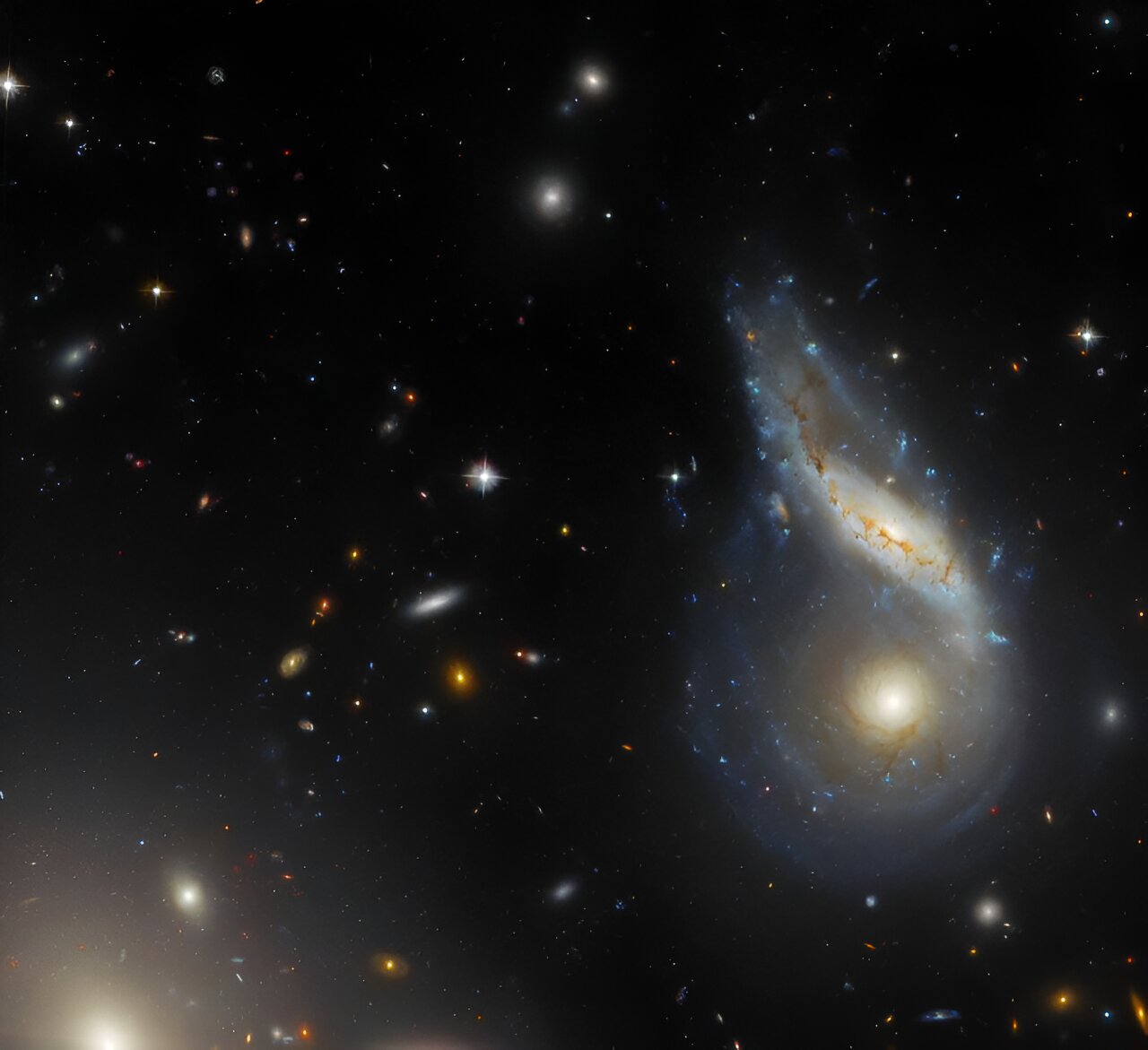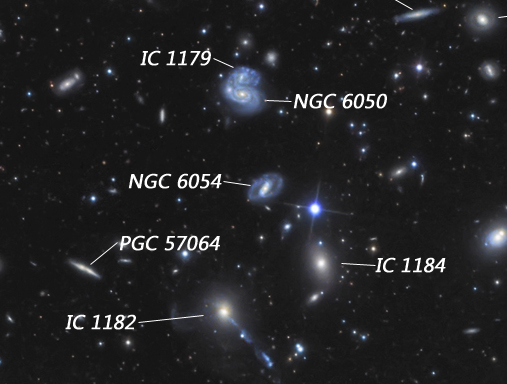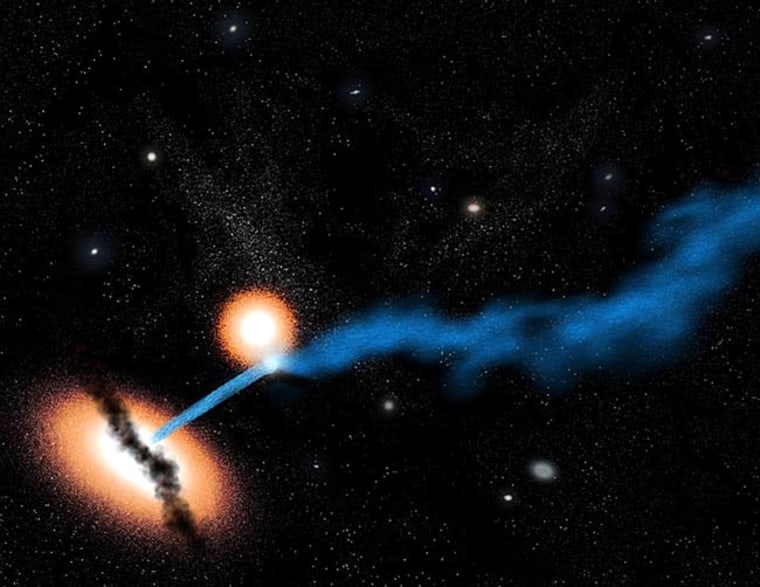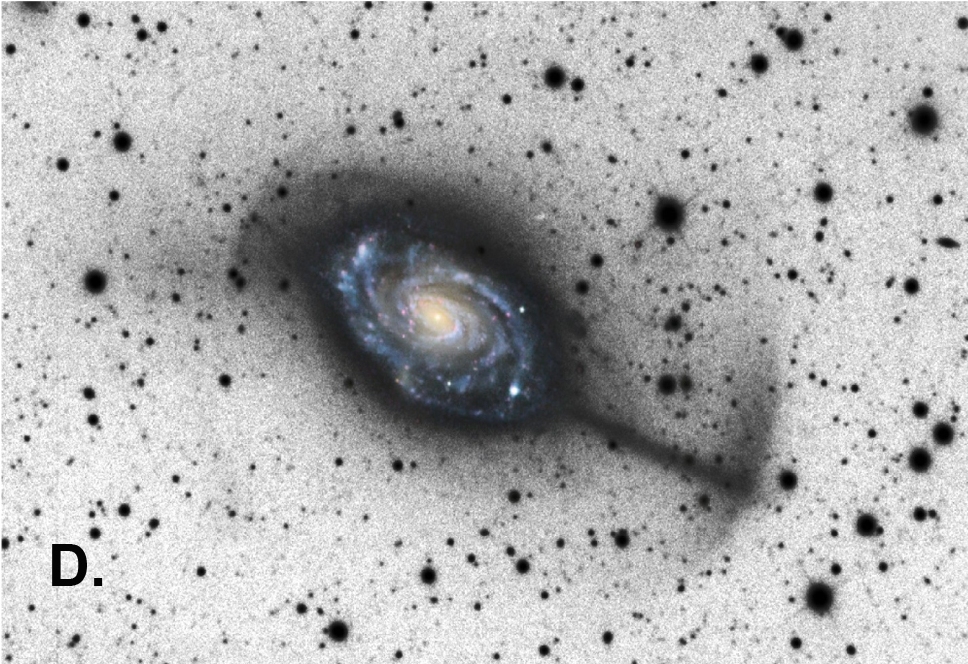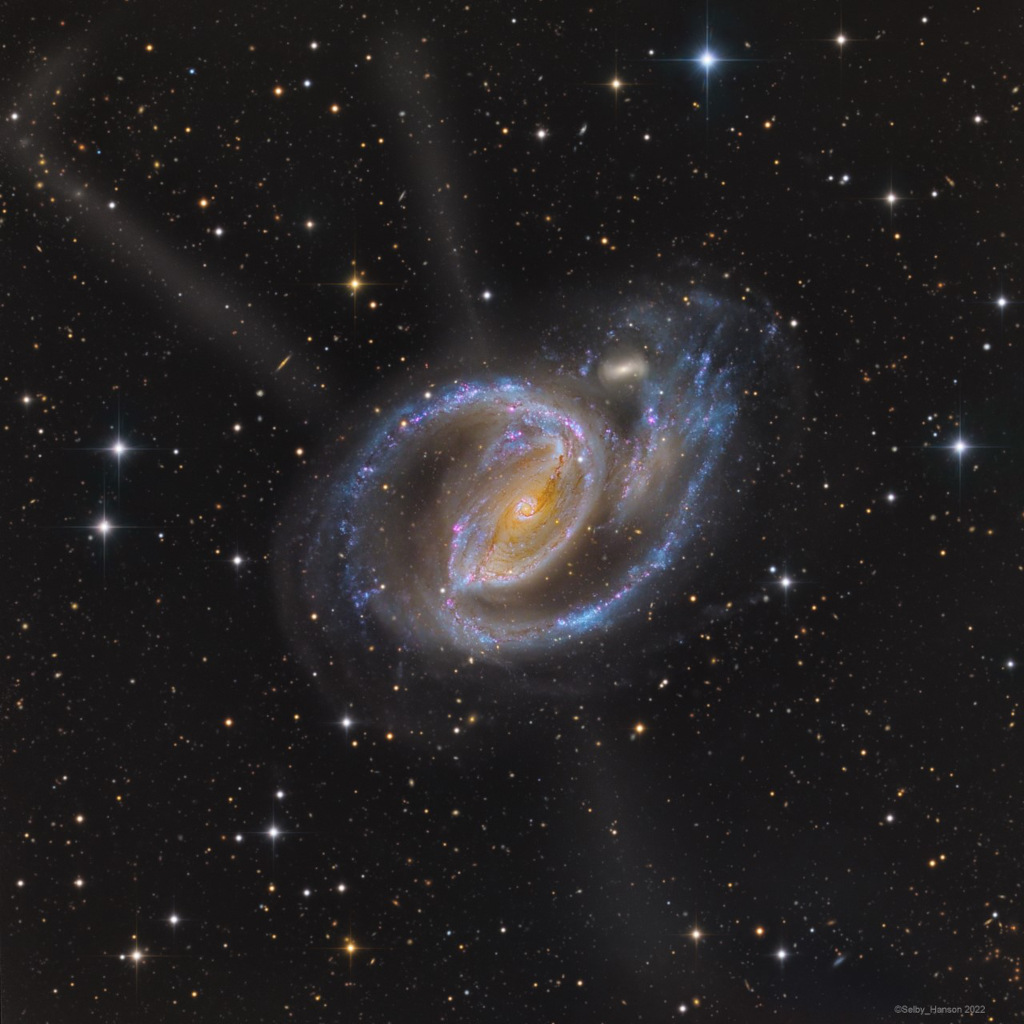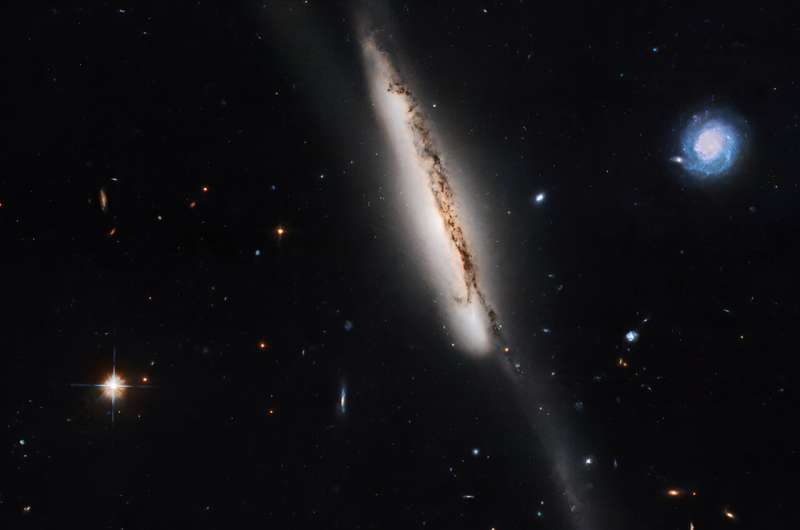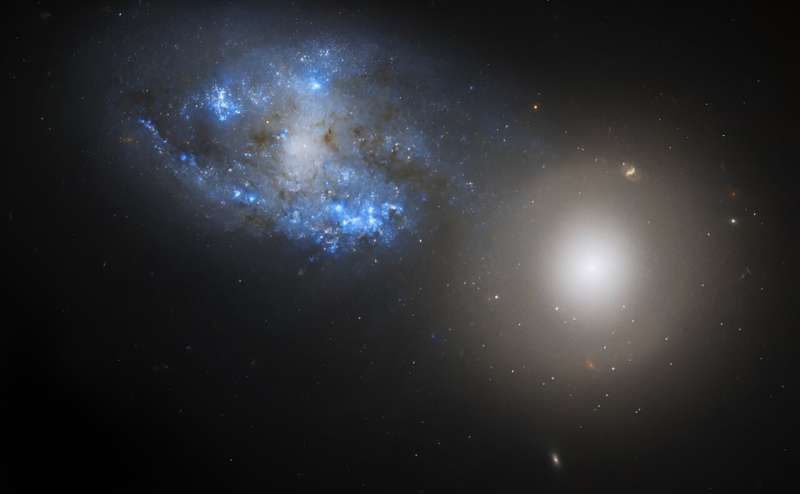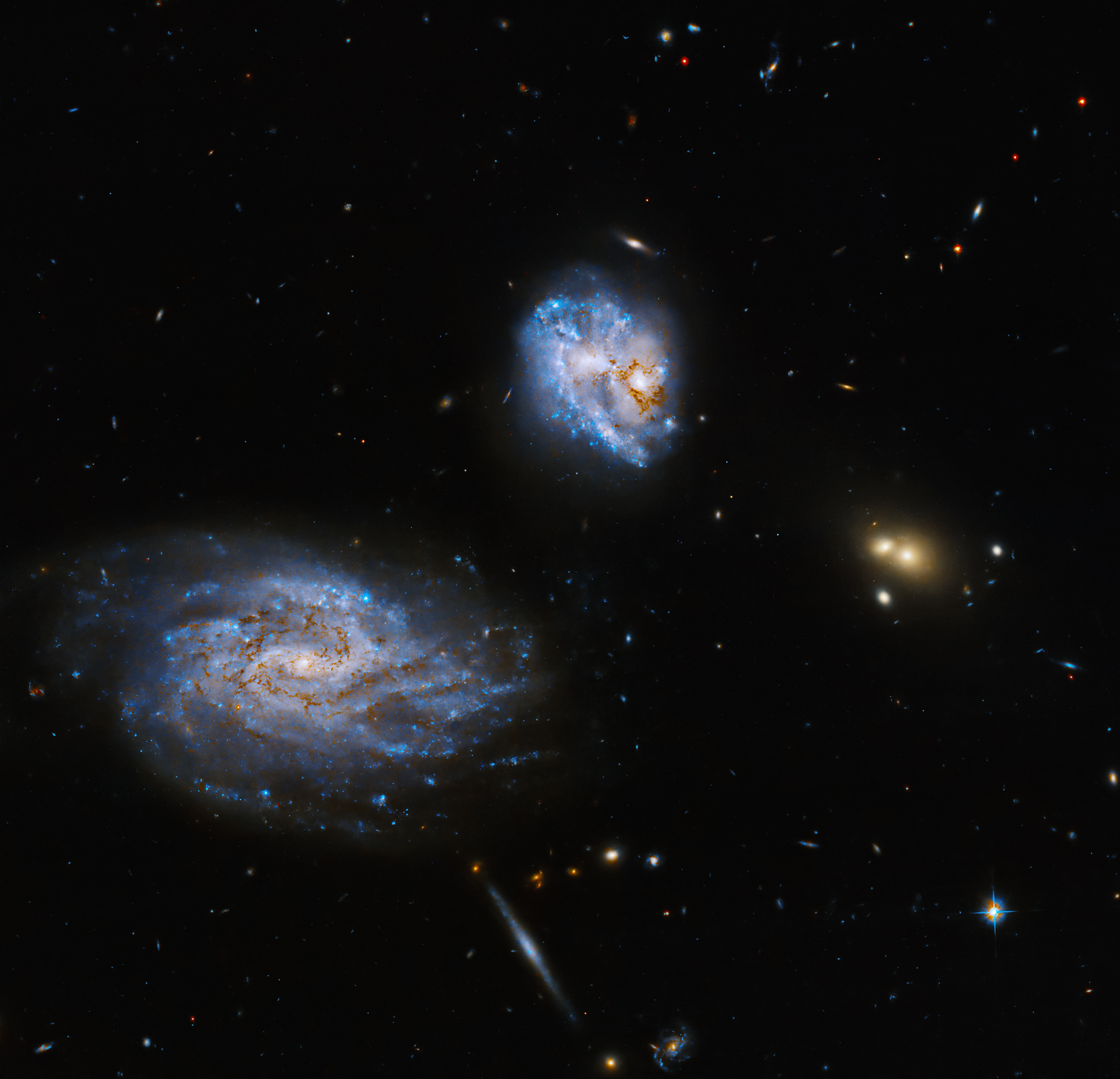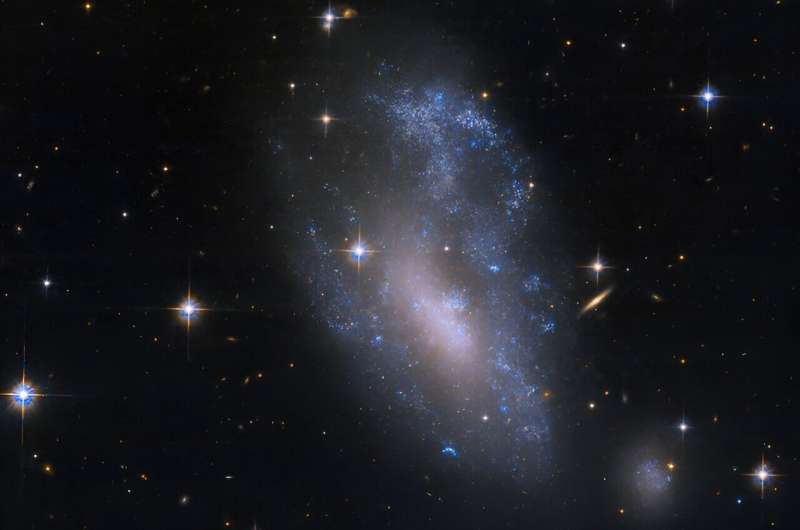AVAO wrote: ↑Thu Jan 25, 2024 5:49 am
Hubble glimpses bright galaxy group LEDA 60847
NASA/ESA | 2024 Jan 23
LEDA 60847 is classified as an active galactic nuclei, or AGN. An AGN has a supermassive black hole in the galaxy's central region that is accreting material. The AGN emits radiation across the entire electromagnetic spectrum and shines extremely brightly. By studying powerful AGNs that are relatively nearby, astronomers can better understand how supermassive black holes grow and affect galaxies.
...
This image of LEDA 60847 combines ultraviolet, visible, and near-infrared data from Hubble. The ability to see across all those wavelengths is one of the things that makes Hubble unique.
...
more
GOTD4Y Jac
Wow, Jac, that's amazing!!!


Let me try to analyze a little of what I think I might see:
I can see some huge yellow shells surrounding the main elliptical galaxy. These shells are made up of old stars, and I have marked them in yellow. So, is there a reason why I left "gap" in the shell at center right? Not really, no.

The edge-on spiral galaxy seen in front of the large elliptical seems to blow a huge "bubble". There is some star formation in this bubbe, so I have marked it in blue. What could have blown such an enormous bubble? A supernova, or a series of supernovas? But supernova remnants are typically more tattered and broken, aren't they? And they have sharper edges, like the
Veil Nebula, right? And it can't be the kind of major outburst that leaves
two huge lobes of emission, like the
gamma ray Fermi lobes or the
hydrogen alpha outflows of M82. Could the bubble actually be a tidal feature?
At the opposite end of the disk of that spiral, there is a much smaller but still very obvious bluish-pinkish-purplish blob. I take this to be a sign of star formation - because surely it can't be a huge supernova remnant, can it?? - so I have marked it in blue.
The center of the spiral galaxy is brilliantly bright and pink. I have marked it with a pink question mark. I take the color to be caused by emission at various wavelengths, among them ultraviolet.
What comes to mind is an actively accreting black hole with a brilliantly bright accretion disk. But is that really likely? Shouldn't we expect the large elliptical galaxy to host a more powerful black hole? Yet we see no diffraction spikes from the center of the elliptical galaxy. Is it possible that there is a huge burst of star formation at the center of the spiral galaxy? Normally though, we'd expect such a burst of star formation to be accompanied by massive dust production, and we see few signs of dust at the center of the spiral galaxy.
All right,
yeah!! The bright pink "star"
is an actively accreting black hole. I should have read the NASA caption:
NASA wrote:
LEDA 60847 is classified as an active galactic nuclei, or AGN. An AGN has a supermassive black hole in the galaxy's central region that is accreting material. The AGN emits radiation across the entire electromagnetic spectrum and shines extremely brightly.
So maybe the huge bubble and the big blob of the spiral galaxy have indeed been blown by the active black hole, then?
I have placed question marks near three smaller galaxies in the lower third of the picture. What I'm asking is whether these galaxies are at the same distance as the two main galaxies, or if they are background or possibly even foreground objects. I think that the small lens-shaped galaxy just below the main spiral galaxy may be at the same distance as the two main galaxies, and it may be part of the action.
I'm going to guess that the galaxy at far right is either at the same distance as the two main galaxies, or else it might be a foreground galaxy. Its surface brightness is pretty low, which suggests to me that it is a low-mass dwarf galaxy, and its color is white, not yellow. Its white color suggests to me that it is a low-metallicity, reasonably "untouched" galaxy that has had little interaction with other galaxies, and whose stars are very old and made of quite pristine gas. Of course I could be wrong about that!
The small spiral galaxy at left looks like a background galaxy to me. It is a gas-rich galaxy, and if it was so close to two merging galaxies, I think its shape would be affected. Anyway, the appearance of this galaxy reminds me very much of the face-on spiral galaxy in Seyfert's Sextet, and that galaxy is a background object:
LEDA 60847 with possible spiral background galaxy at left.
Credit: NASA/ESA/A. Barth, M Koss, A Robinson, Gladys Cooper.
Finally, in the LEDA 60847 image there is a small galaxy at far right that looks like a cometary galaxy to me, a galaxy whose disk is very bright at one end, like a comet coma!
And now I'm done! Phew! Thanks for finding this great galaxy image, Jac!
Ann




